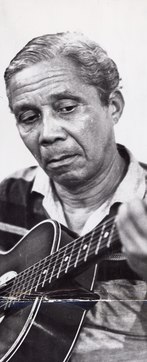| Revision as of 21:53, 21 October 2021 editWikiCleanerBot (talk | contribs)Bots928,113 editsm v2.04b - Bot T5 CW#16 - Fix errors for CW project (Unicode control characters)Tag: WPCleaner← Previous edit | Revision as of 22:21, 10 November 2022 edit undoSer Amantio di Nicolao (talk | contribs)Autopatrolled, Administrators6,340,458 editsm Copying from Category:20th-century Brazilian male singers to Category:20th-century Brazilian singers should be non-diffusing using Cat-a-lotNext edit → | ||
| Line 25: | Line 25: | ||
| ] | ] | ||
| ] | ] | ||
| ] | |||
| ] | ] | ||
| ] | ] | ||
Revision as of 22:21, 10 November 2022
| This article needs additional citations for verification. Please help improve this article by adding citations to reliable sources. Unsourced material may be challenged and removed. Find sources: "Nelson Cavaquinho" – news · newspapers · books · scholar · JSTOR (November 2007) (Learn how and when to remove this message) |

Nelson Cavaquinho (October 29, 1911 – February 18, 1986, birth name Nelson Antônio da Silva) was one of the most important singer/composers of samba. He is usually seen as a representative of the tragic aspects of samba thematics, with many songs about death and hopelessness. He was a prominent figure of samba school Estação Primeira de Mangueira.
Biography
Nelson was born in Rio de Janeiro. Coming from a poor family, he quit school at a young age to seek employment in a factory. He showed a musical talent at a young age playing a home-made guitar made of a cigar box and wires. When he could, he would borrow a cavaquinho and try and copy the techniques of professional cavaquinho players. He demonstrated a great ability to play the instrument and composed a choro ("Caminhando") which gained him notoriety as a musician (due in part to an uncommon modulation which made it hard for other instrumentalists to harmonize it). He was finally given a cavaquinho and having demonstrated a unique playing style on the instrument was given the nickname "Nelson Cavaquinho". He demonstrated a unique style of playing with only two fingers.
As a young man he became acquainted with famous samba players like Cartola, Carlos Cachaça and Zé da Zilda. He went on to compose over 600 compositions. His main partner was Guilherme de Brito. Some of his better known works are: "A Flor e o Espinho", "Folhas Secas", "O Bem e o Mal" and "Juízo Final".
He died of emphysema on February 18, 1986, at the age of 74, in Rio de Janeiro.
References
| This article does not cite any sources. Please help improve this article by adding citations to reliable sources. Unsourced material may be challenged and removed. Find sources: "Nelson Cavaquinho" – news · newspapers · books · scholar · JSTOR (October 2016) (Learn how and when to remove this message) |
External links
This article on a Brazilian musician is a stub. You can help Misplaced Pages by expanding it. |